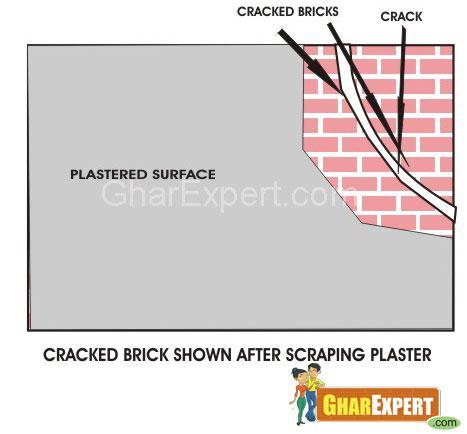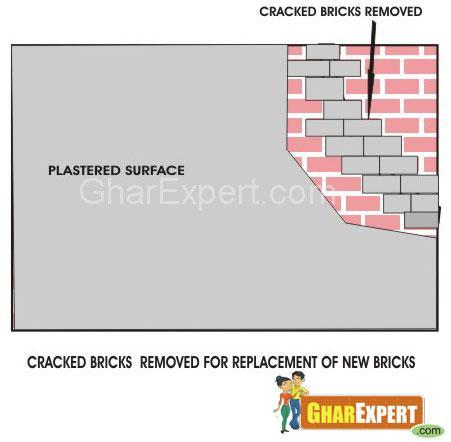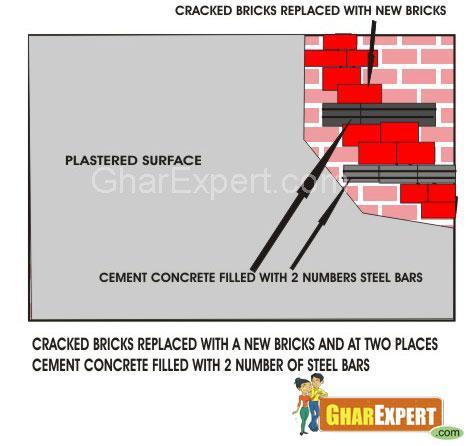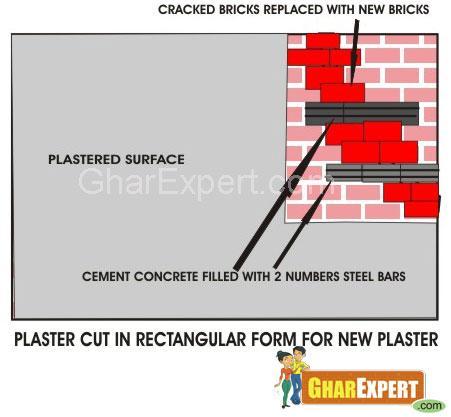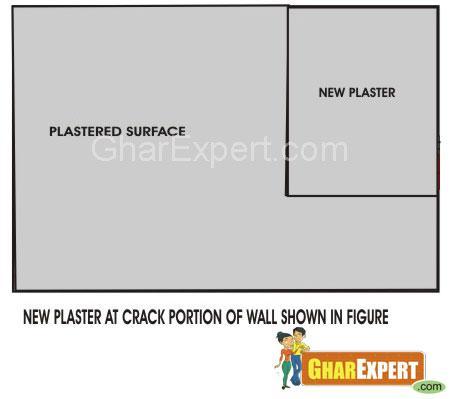Dear Sunder
On seeing your images the cracks seems to be in plaster. see remedy below
Cracks must be repaired immediately when
observed otherwise the life of structure will reduce causing structural
failure. They not only weaken the building but spoil the beauty of walls
also. This write up tells you about repair of cracks in plaster, RCC
member, Brick walls, Floor and Fine Cracks.
The cracks can be prevented at the time of
construction. To know more about prevention of cracks during
construction, click at the link below.
Two types of cracks are found on surface
of plaster i.e. A. Crack with hollow sound in plaster. B. Crack with no
hollow sound in plaster. Hollow sound can be checked by striking the
plaster.
A. Repair cracks giving hollow sound
Remove plaster applying proper cut
Defective plaster should be removed and the edges should be slightly cut in square or rectangular shape to provide a neat joint.
Prepare the surface thoroughly
Clean the surface with wire brushes and wash it. Wet the surface 24 hours before application of cement mortar.
Apply fresh cement mortar and finish the surface
Defective portion should be filled in with
cement mortar. Keep the surface wet at least for 3 days. When surface
is dry, finish it according to adjoining area on the wall.
B. Repair cracks if it is solid without hollow sound
Clean cracked portion of all loose
materials and fill crack seal sealants in cracked portion. Finally
finish the surface according to adjoining area.
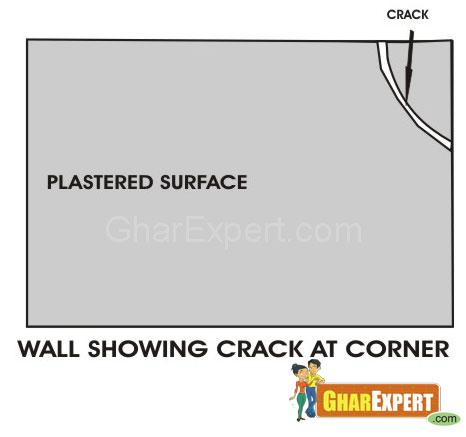
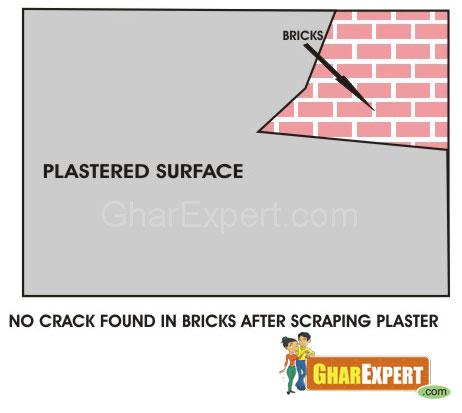
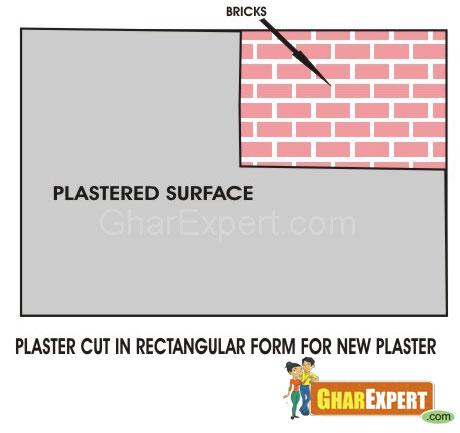
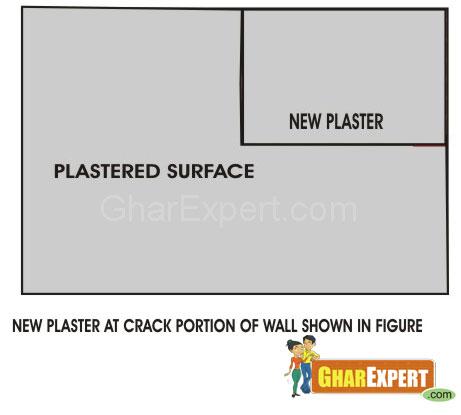
NOTE: Plastering is done after cleaning. To know the process of ‘Plastering’ click on the link
Repair Cracks on RCC Surface
Clean cracked portion and apply guniting
The cracked portion should be widen gently
and be cleaned of all loose materials. Fill the cracked portion by
pressure grouting or ‘guniting’. The material for such grouting can be
epoxy or cement (with suitable admixture).
Apply epoxy and finish the surface
Epoxy has more strength and adhesion than
cement and can go into very thin cracks as fine as 0.1 mm. The surface
should be finished according to adjacent area on the wall.
Note: The cracks in RCC
members/ structural members should be repaired immediately with
consultation form structural engineer/professional.
Repair Cracks on face of plaster
When two components having different
elastic properties such as RCC slab and brick work abating each other,
the crack on face of plaster is formed between these components due to
their thermal expansion.
Remove plaster and old material
The plaster should be removed from cracked
portion. The joints should be widened at least 20 mm to 25 mm in
thickness. Clean old material by washing and brushing.
Apply cut and prepare the surface
Apply slight cut on edges in straight line
to provide neat joint. Make the surface damp 24 hours before
application of new plaster.
Apply cement mortar
Cement mortar should be applied on
defective portion. Make 20 mm wide and 25 mm thick groove at the
junction of two materials/components.
Do curing and finishing
Keep the surface wet at least for 3 days. When surface is dry, finish it according to adjacent area on wall.
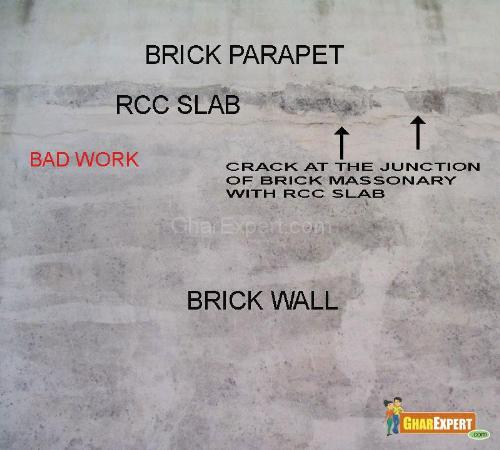

Repair Cracks in Masonry Walls
Two types of cracks are seen in masonry walls i.e. A. Crack in mortar joints of walls. B. Crack in bricks/Diagonal Cracks
A. Repair cracks in mortar joints of walls
Remove mortar
The mortar should be removed from cracked
joint with the help of iron tools at least up to 25 mm depth. All loose
material should be cleaned from cracked portion.
Wet the surface and apply cement mortar
Cracked portion must be kept moist at
least for 24 hours before doing repair. Fill in the joints with cement
mortar of coarse sand in 1:4.
Do curing and finishing
After filling the joints with cement
mortar, keep the repaired surface wet at least for 3 days. After drying
the surface, finish the repaired area according to the adjoining area.
B. Repair cracks in bricks/diagonal cracks
Remove broken bricks
Before doing any repair of cracks, make
sure that the cracks are stabilized and are not widening further. Remove
broken bricks by scratching cement mortar from the joints gently.
Prepare the surface
All loose material should be cleaned from
the portion by brushing and washing. Wet the surface 24 hours before
application of new plaster.
Fix new bricks thoroughly
Lay fresh cement mortar with coarse sand
in 1:4 and fix new bricks. Fill all joints around bricks with mortar
tightly with the help of iron tools.
Do curing and finishing
The repaired surface should be kept moist
up to 7 days. When surface is dry, it should be finished according to
adjoining area.

